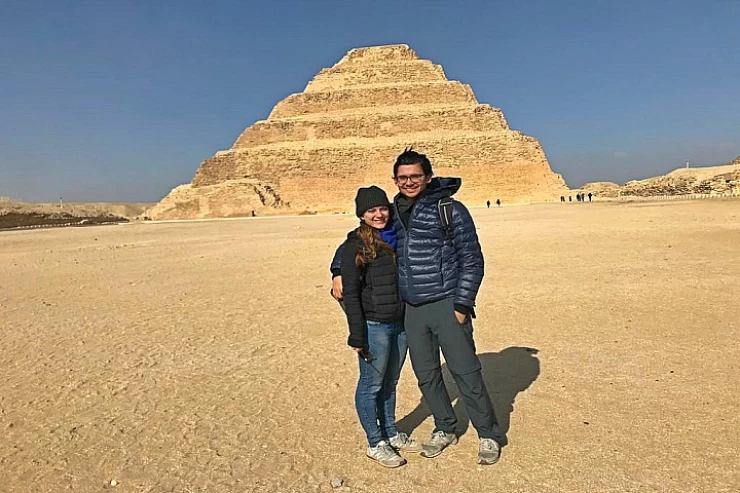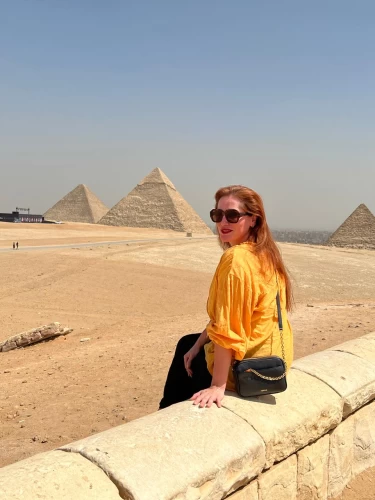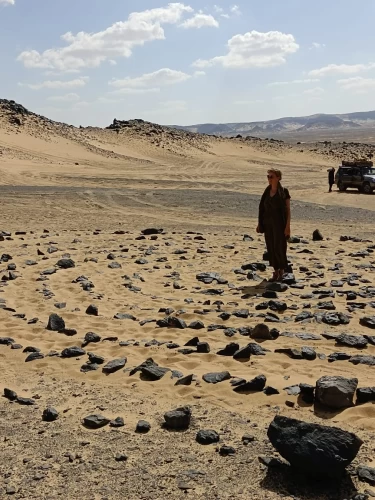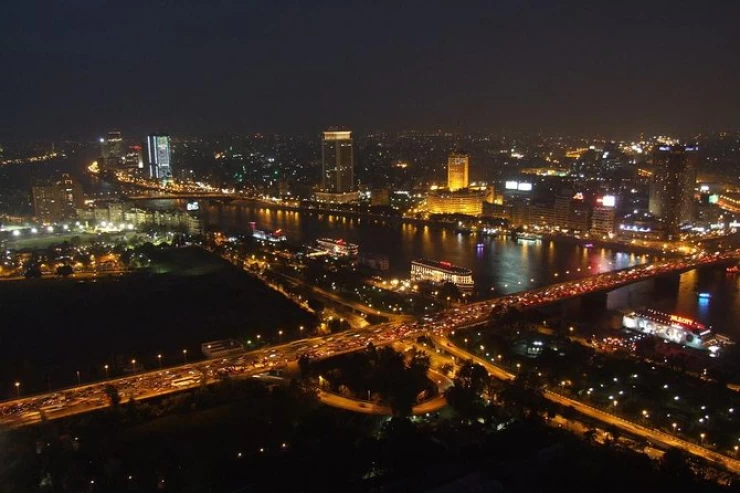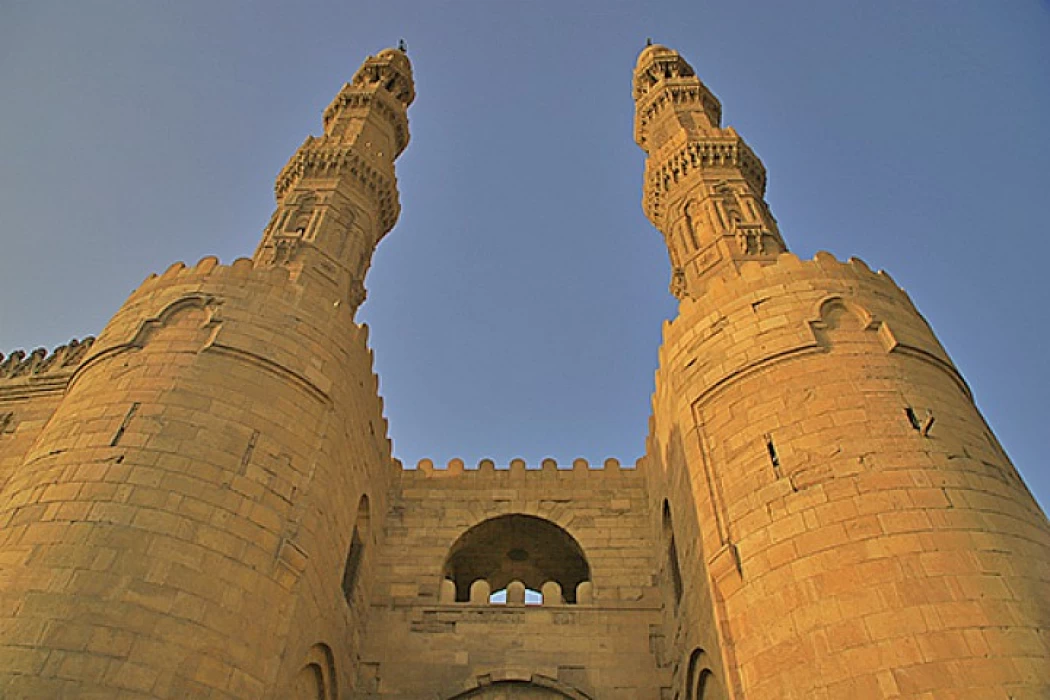
Bab zuweila
Bab zuweila
La porta di Bab Zuweila è stata per tanti anni la principale porta meridionale della città durante il periodo fatimide e una delle più antiche porte e cose da fare al Cairo. Fu costruito nel 1090. Nella città di Mamelucco le mura fatimidi si spinsero contro le estensioni di Salah al Din, Bab Zwayla divenne un punto centrale.
Bab Zwayla fu costruito durante l'XI secolo, dal visir fatimide Badr El Gamali all'interno del cancello mentre sul tetto si ottengono viste panoramiche che si estendono fino alla cittadella.

La porta è una delle poche porte rimaste di Il vecchio Cairo, con due minareti in cima, Bab Zwayla è considerata la più bella delle 3 porte del Cairo Islamicoe la più bella, Salire le scale dei minareti ti darà diversi vedute del Cairo islamico con la sua architettura accattivante.
Puoi visitare Bab Zwayla e molte altre porte del Cairo, la capitale dell'Egitto e le mura della città durante il Cairo Day Tours attraverso i viaggi del Cairo islamico, i tour a piedi del Cairo oi fantastici tour dello shopping del Cairo quando hai in programma qualsiasi tour in Egitto .
Puoi visitare Bab Zwayla e molte altre porte del Cairo, la capitale dell'Egitto e le mura della città durante il Cairo Day Tours attraverso i viaggi del Cairo islamico, i tour a piedi del Cairo oi fantastici tour dello shopping del Cairo quando hai in programma qualsiasi tour in Egitto .
Il nostro team vi aiuterà a viaggiare in Egitto e sperimentare il tempo soleggiato del nostro bel paese durante la Pasqua, grazie alla loro vasta conoscenza del turismo egiziano. Puoi personalizzare il tuo pacchetto selezionando uno dei nostri pacchetti di viaggio in Egitto o sfruttare al massimo il tuo tempo in una breve visita, imparando di più sulla storia egiziana e le sue affascinanti storie e vivendola attraverso tour privati al Cairo. Partecipa a uno dei nostri tour economici in Egitto attraverso il deserto del Sahara, come i tour di Siwa dal Cairo, per esempio, o preferibilmente i tour nel Deserto Bianco d'Egitto. Scoprite i nostri tour di un giorno ad Assuan, fate una gita di un giorno da Assuan ad Abu Simbel, o viaggiate via terra e godetevi i nostri Viaggi ed Escursioni a Luxor per vedere gli incredibili di Karnak, il Tempio Di Luxor, il Tempio di Hatshepsut, e vedete le meravigliose tombe splendidamente dipinte nella Valle dei Re, questo è il luogo dove i re e i governanti del nuovo regno riposano in pace e imparate i loro riti di mummificazione e sepoltura. Vi daremo un indescrivibile benvenuto in questa benedetta terra d'Egitto con l'aiuto delle nostre guide qualificate e pronte.
In Egitto c'è un luogo chiamato Sabil Qitas dove si possono imparare molte cose interessanti guardando ed esplorando diversi oggetti.
Located in the center of Cairo, amidst the worst traffic possible, lies Bab Zuweila, one of the few medieval gates remaining in the city and a reflection of the long history of the country of Egypt as a whole. While Bab Zuweila’s famous twin towers and Islamic embellishments suggest an architectural masterpiece, it is much more than that. Bab Zuweila has seen centuries of Cairo’s history, from battles during the Middle Ages to redevelopment in contemporary times, and is still a favorite spot for history lovers as well as inquisitive tourists.
The Southern Gate in Cairo, known as Bab Zuweila, is an ancient structure of the North African city’s walls built more than a thousand years ago during the Fatimid emperor’s reign. This was around the time when Cairo was on rapid growth, and the ambitious Fatimid caliphs wanted to fortify the city with several walls and a series of gates to ward off possible encroachers. The name of the gate, Bab Zuweila, was derived from the name of the Moroccan tribe of Zouila, who was stationed at the gate. This particular gate was built last to the city as a southern entrance of the city, and like other gates, Bab al-Futuh and Bab al-Nasr were constructed.
With time, Bab Zuweila has been evolutionarily distorted yet kept structural and functional integrity, making it a great symbol of stubbornness for Cairo and encouraging different events in history. It was here where power was exhibited by monarchs, where revolts were dealt with harshly, and where entry into the city was allowed to traders, pilgrims, and explorers. Being among the few existing gates, today it also provides some insight into changes that have taken place in Cairo and the purpose that it served then in the Islamic world.
Bab Zuweila is an architectural marvel merging military and Islamic design aspects. A unique cross-section is provided by two massive 36-meter-high minarets mounted on either side of the gate. The walls of the gate are more than 10 meters thick. And constructed of limestone with sophisticated designs, typical of the Fatimid’s dome dentils.
Upon entering the Bab Zuweila gate, one immediately notices adorning a high pointed arch, typical of Islamic architecture, the decorative finishing of the pointed arch interior. This pointed archway is an entrance to a hallway; the hallway, in turn, allows safe access to other parts of the city within the walls of the massive gate, protecting the travelers within.
The two distinctively shaped towers, begun in the 15th century and integrated into the gate today, can be viewed as the most outstanding feature of Bab Zuweila Gate. They have modified their marketing systems to endure the existing conditions of war. These were the towers from which the azan was called. These towers can be climbed by tourists today where they can view the skyline of the city, although unlike today it was possible to view the city almost at the same level during the medieval period.
The importance of Bab Zuweila is not limited to its architectural design; it has been part of several key moments in the history of Cairo. The gate served its purpose during the Mamluk period when it was used for a public execution. It was a place where criminals and political opponents would have their severed heads fastened on the walls as a warning to the rest. It was, therefore, a place filled with terror as well as excitement.
In 1517, when the Ottoman sultan Selim I came to Cairo and hung the last Mamluk sultan Tuman Bay II on one of the arches of the gate, was one of the most well-known episodes in the history of Bab Zuweila. This event symbolized the fall of the Mamluks and the beginning of Ottoman Egypt. Today, there is a plaque placed near the gate paying tribute to the unfortunate fate of Tuman Bay, and this gives the visitors a glimpse of the violence that has been associated with the place.
Not only did Bab Zuweila serve as a place for secular activities, but it was also of spiritual importance. All pilgrims before embarking towards Mecca will enter the gate to be blessed and pray for their trip. Such sacred pathways turned out to be convenient, thus increasing the significance of the gate and making it within the primary holy sights of the city.
Bab Zuweila and the Pulse of Cairo’s Souks
Situated near the heart of Islamic Cairo, Bab Zuweila is surrounded by vibrant markets, or souks, which have thrived for centuries. The gate leads into Al-Muizz Street, one of the oldest and most historically rich streets in Cairo, lined with bustling shops, spice vendors, and artisans selling traditional wares. This area, known as the Khan el-Khalili market, has been a hub for traders and shoppers since the 14th century, offering everything from handmade jewelry to aromatic spices.
The sounds of merchants haggling, the aroma of fresh bread baking in nearby ovens, and the vibrant colors of fabrics and trinkets create an atmosphere that transports visitors back in time. Bab Zuweila stands as both a gateway and a sentinel, watching over the daily life of the souks and embodying the spirit of Cairo’s enduring commercial traditions.
The historical significance of Bab Zuweila, noting its functional and cultural aspects, led Egypt's Ministry of Antiquities to devote a great deal of effort to conservation activities. Works of reconstruction in the 2000s included activities such as stonework cleaning, minaret support strengthening, and inner passage reconstruction. Such meticulous and effective activities are directed towards ensuring that Bab Zuweila is conserved for the benefit of posterity and enabling the visitors to appreciate the rich history it possesses and its role in the history of the city of Cairo.
Today, Bab Zuweila has become one of the most visited places in Egypt, with most people coming to enjoy the rich culture of Cairo. The gate has also turned out to be a source of national pride for the citizens of Egypt, seeing as it symbolically illustrates the scale and strength of the capital.







